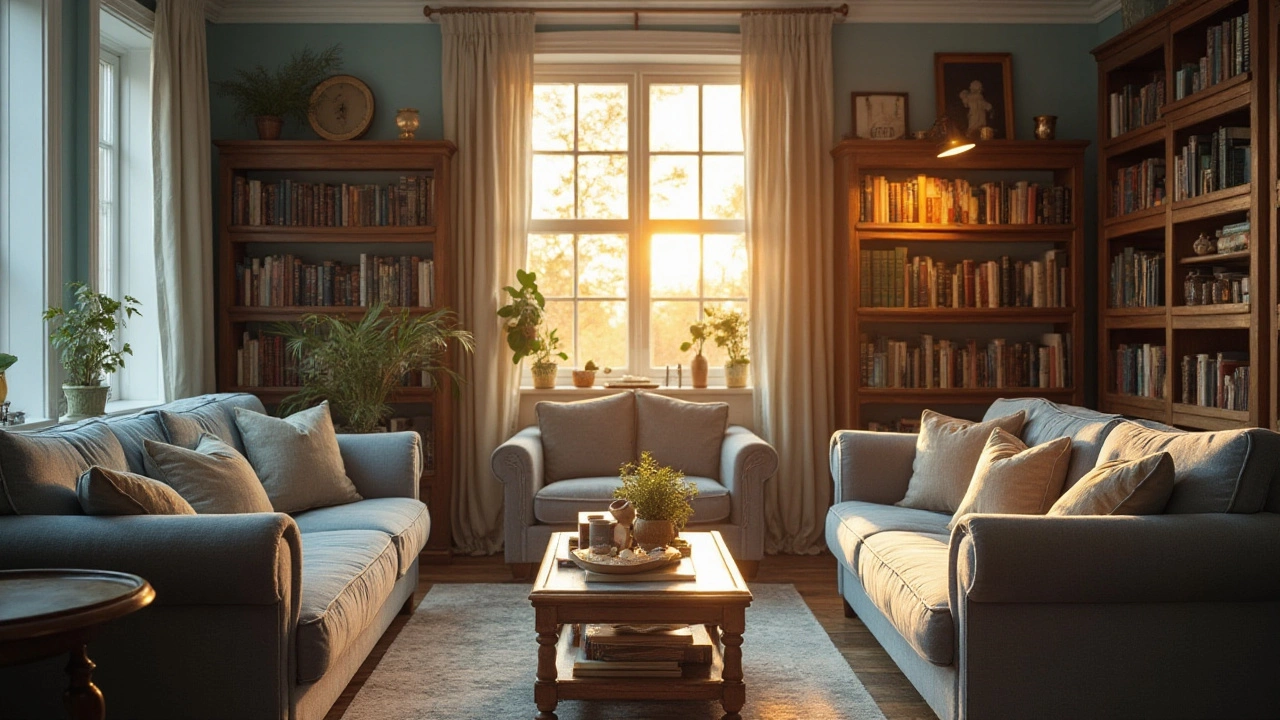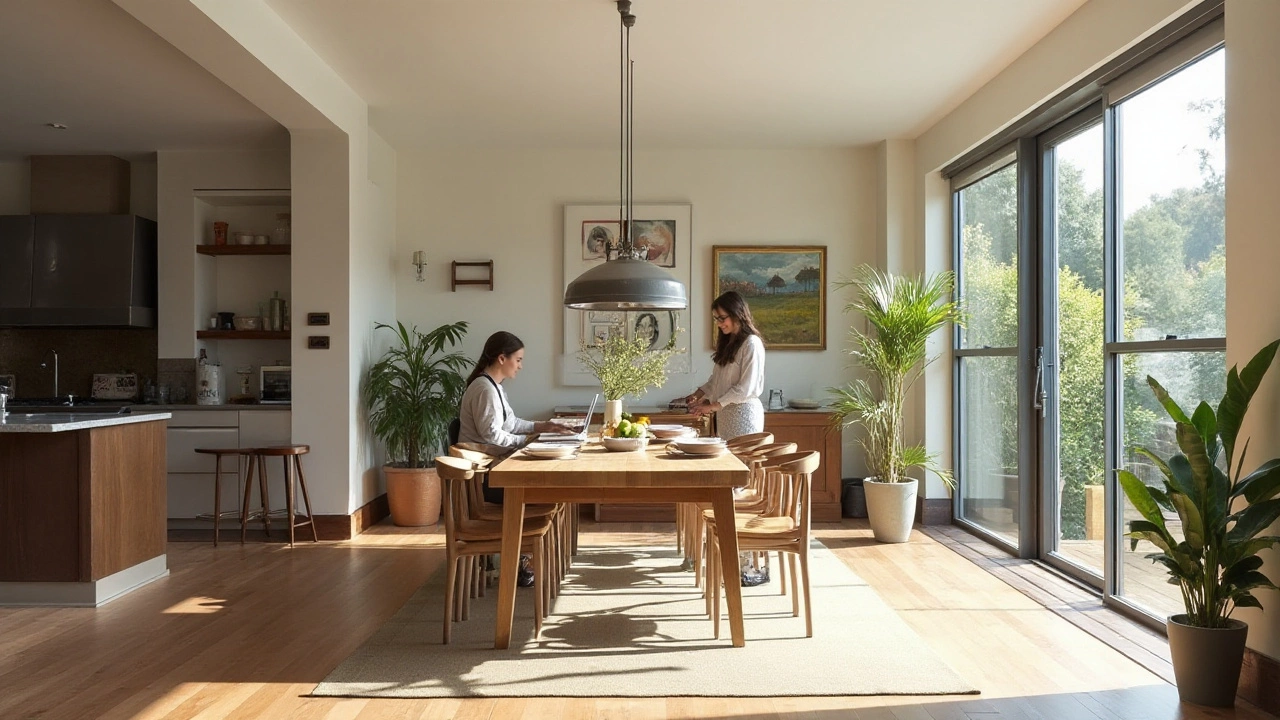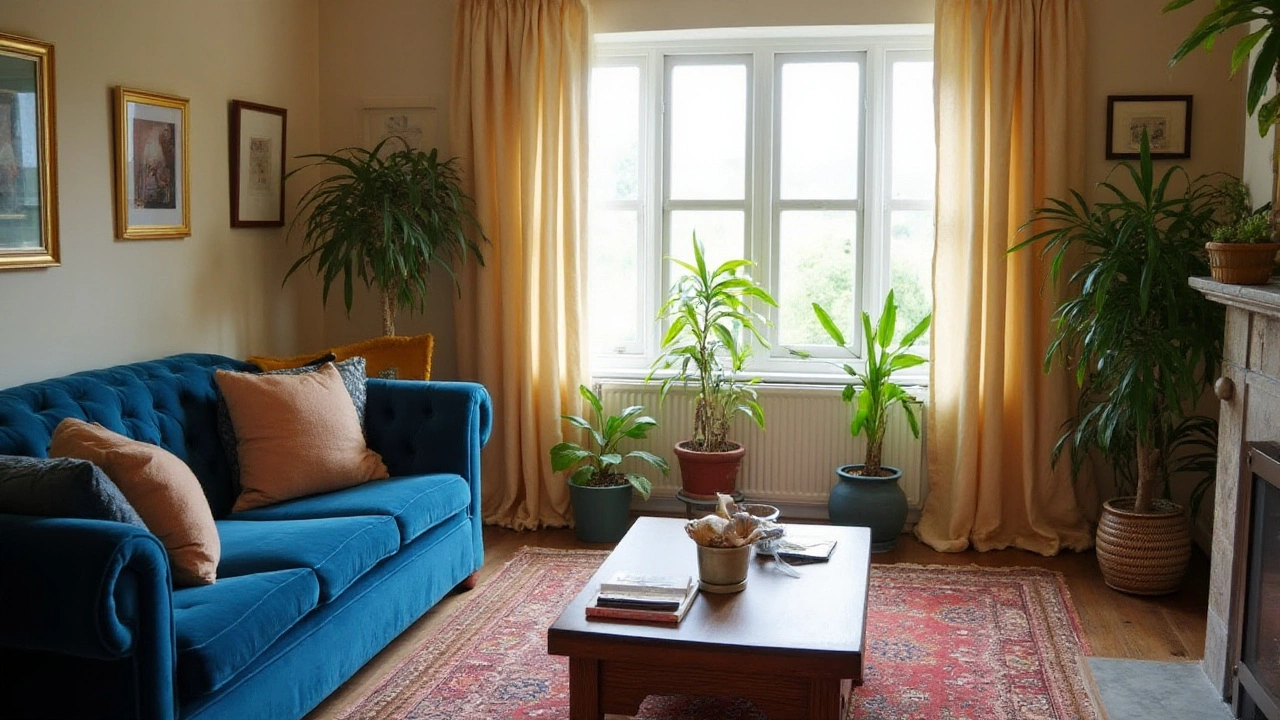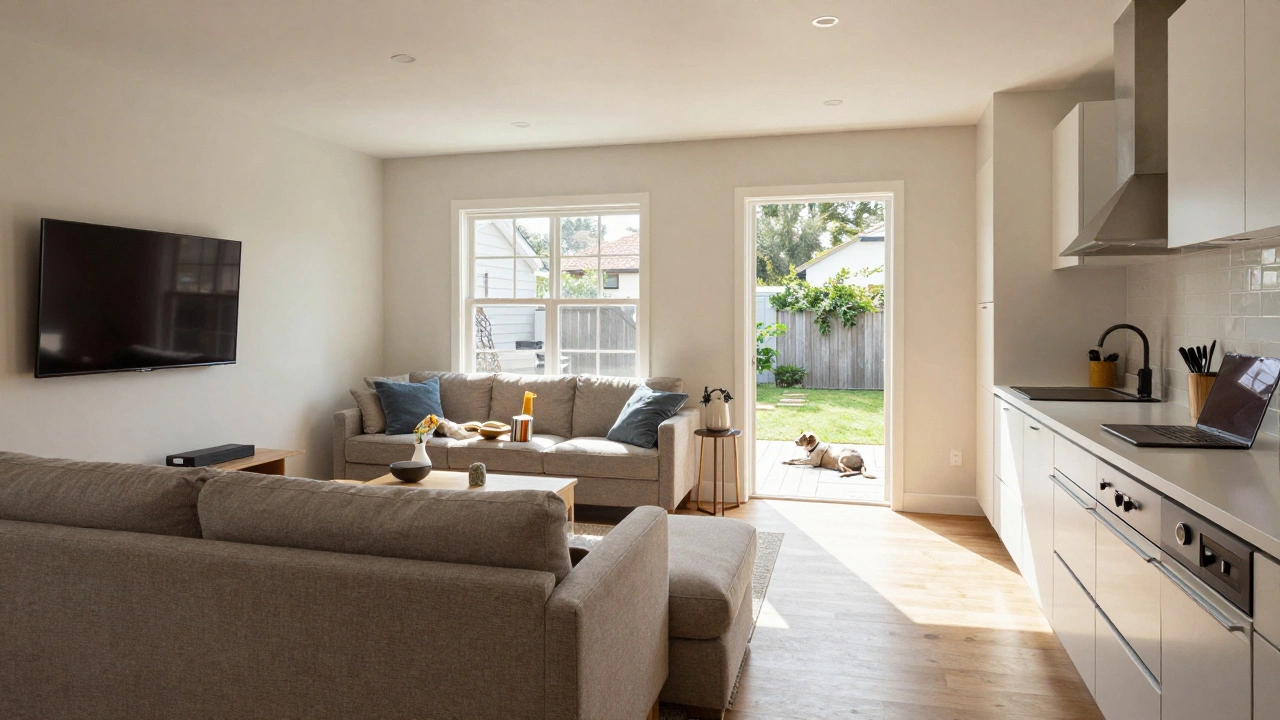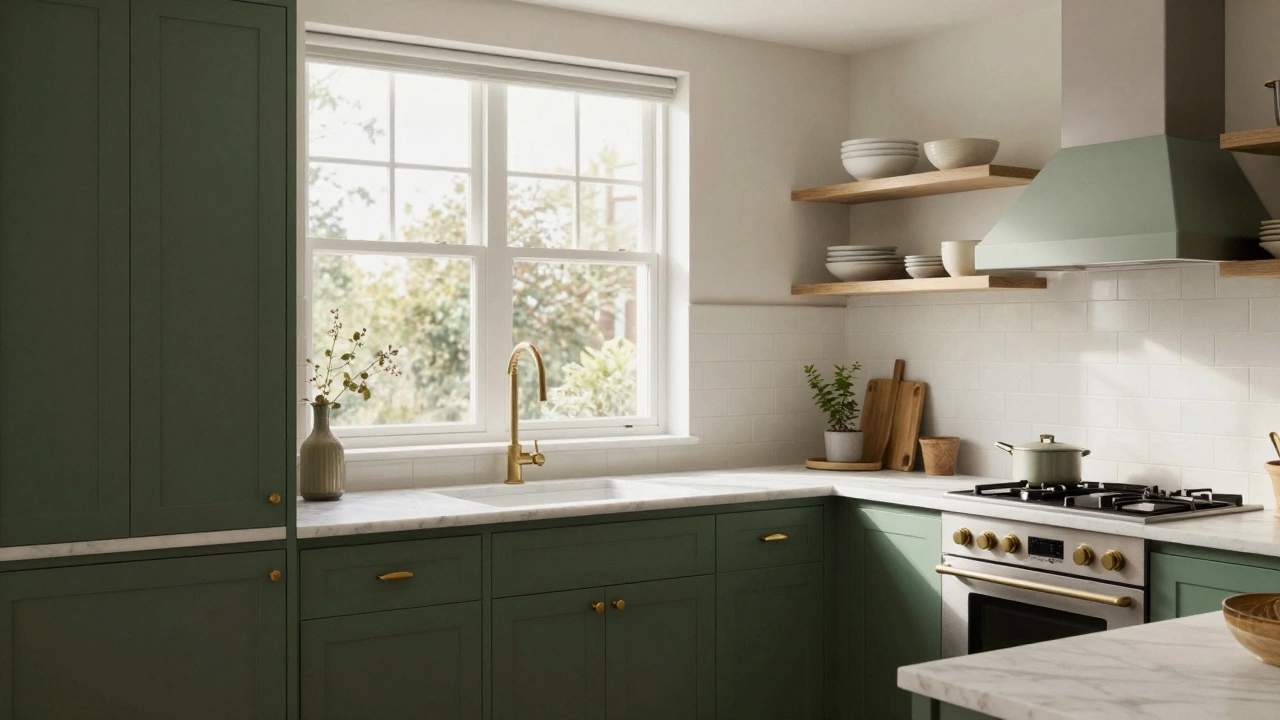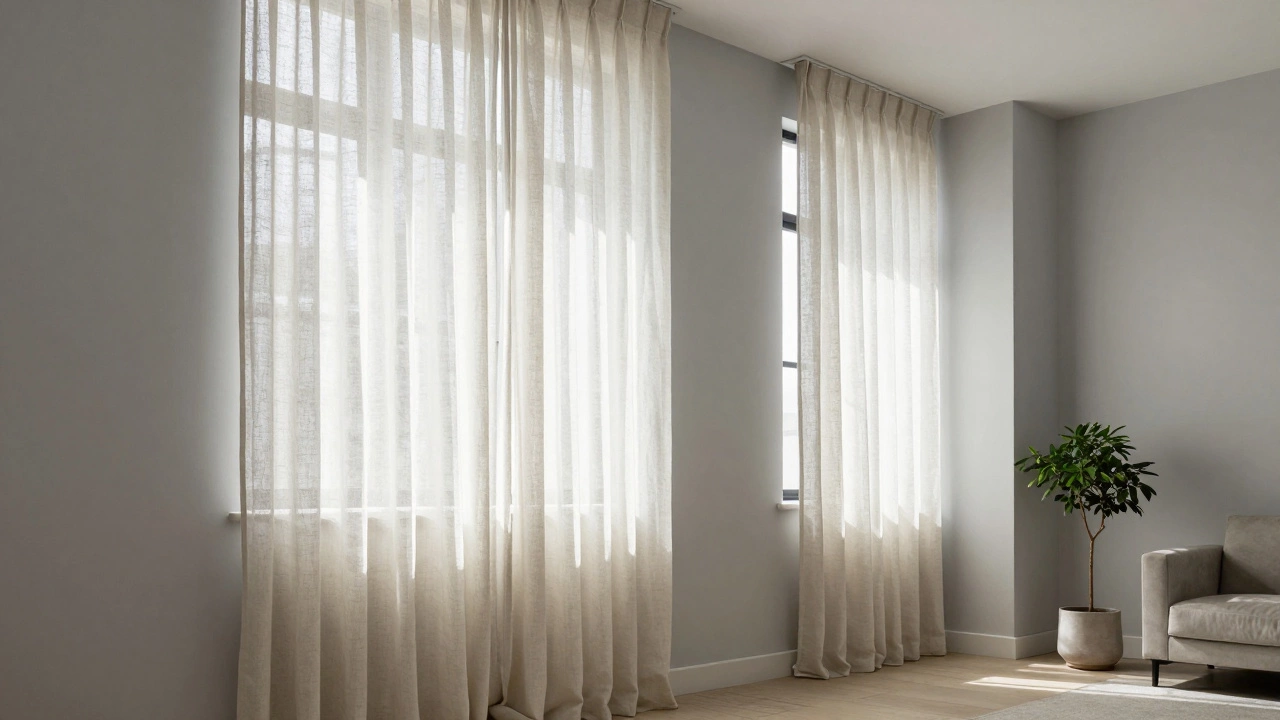When it comes to designing a living room, choosing the right color can create the perfect mood and vibe. Colors have the power to transform a space, making it feel more inviting, spacious, or intimate. Understanding the favorite hues for living rooms across homes today can inspire your own creative decisions.
From timeless neutrals to soothing earth tones, and bold, statement-making shades, the spectrum of colors used in living rooms is vast and varied. We’ll explore why some colors have stood the test of time while others are gaining new popularity, and help you navigate your own journey in turning your living space into a reflection of your personality and style.
- The Psychology of Color in Interiors
- Current Popular Living Room Colors
- Classic versus Modern Color Trends
- Using Neutrals and Accents
- Tips for Choosing the Right Color
- Final Thoughts on Living Room Palettes
The Psychology of Color in Interiors
Color is not just a visual experience; it’s a psychological one. In the world of interior design, the color palette chosen for a living room can significantly affect the mood and emotions of those who enter. Each hue carries intrinsic psychological properties, shaping how we feel in subtle but powerful ways. For instance, blues and greens, often found in nature, are thought to evoke a sense of calm and relaxation, making them a top choice for tranquil living spaces. In contrast, warm shades like red and orange can energize and stimulate, making a room feel more vibrant and full of life. These effects underscore the importance of considering psychological impacts when selecting living room colors.
The way color affects mood and behavior is supported by numerous studies. Research has shown that blue enhances productivity and fosters a calming atmosphere, which could explain why it is extensively used in both homes and corporate settings. Similarly, yellows, associated with sunlight, tend to bring a feeling of warmth and happiness but can be over-stimulating in large doses. A well-known interior designer once quoted, "The best interior design considers not just function and form, but also the emotions it evokes." This highlights why understanding the emotional impact of colors is vital.
The choice of colors is also deeply cultural. In some cultures, a color like white, often seen as pure and clean, might symbolize mourning and loss. In Western homes, whites and grays have been the backbone of contemporary design, offering a neutral foundation that allows for other decor elements to shine. On the other hand, rich, earthy tones are cherished in other parts of the world for their ability to ground a space and connect it to nature. This cultural influence expands the dimension of choosing the right color for your living room, encouraging you to think from various perspectives when designing your home.
It's fascinating to delve into how color preferences can shift over time with trends and technological advancements. With more sophisticated lighting solutions available today, people can afford to be bolder with their color choices, knowing they can tailor the brightness and hue to fit different times of day or mood settings. A recent interior design survey noted that while neutrals remain popular, the past year saw a rise in the use of jewel tones like emerald and sapphire, noted for their rich, luxurious feel. Designers often emphasize experimenting with color by starting with a single wall or through accents, allowing you to test the waters without a complete overhaul.
When planning your home decor, it’s crucial to remember that color perception can alter with the textures and materials used in a room. Matte surfaces can make colors appear more muted, while glossy finishes can enhance their vibrancy. This interplay of elements further complicates, yet enriches, the planning of a room's design. For a nuanced approach, consider how natural light enters your space at different times of the day. For instance, a bright midday light can wash out colors, while evening shadows can deepen tones, shifting the ambiance entirely.
Finally, it’s important to align your color choices with personal preferences to create a living room that resonates with you. While various theories and studies provide a guideline, the ultimate goal is to feel comfortable and at home in your space. So, whether you’re drawn to the understated elegance of a sleek monochrome palette or the inviting warmth of rich, rustic tones, the best living room colors are those that reflect both your taste and desired emotional outcome.
Current Popular Living Room Colors
The colors you choose for your living room not only express your personal style but also follow certain trends that evolve over time. In recent years, there has been a noticeable shift towards more natural and muted palettes. Many homeowners are gravitating towards earthy tones that instill a sense of calm and connection to nature. These include shades like soft sage green, warm terracotta, and serene sky blues. These colors are not only soothing but also versatile, making them an excellent choice for those looking to create a harmonious and peaceful environment.
Alongside these earthy tones, classic neutrals such as taupe, beige, and greys continue to dominate the living room color scene. These colors provide a perfect backdrop for other decorative elements, easily blending with various styles from minimalist to eclectic. A recent resurgence of interest in deeper shades, like navy and charcoal, offers a striking alternative for those looking to add depth and sophistication to their spaces. Deep colors can provide a stunning contrast to lighter furniture and décor, bringing an unexpected richness to the room.
Recently, there's been an exciting trend towards using bold accent colors to create focal points in living rooms. Designers are increasingly suggesting daring hues like emerald green or rich royal blue, often used on one wall or in small alcoves to draw the eye and create interest. Pairing these vibrant colors with neutral furnishings can create a balanced look that is both modern and timeless. As interior designer Jane Howarth points out,
"Adding a splash of bold color through an accent wall or select piece of furniture can dramatically alter the mood and energy of a space."
An interesting emerging trend is the use of pastels, offering a more playful and soft touch to the living space. Pastels like light blush pink, soft butter yellow, and pale lavender are becoming go-to choices for those interested in a light, airy atmosphere. Pastels can be particularly effective in rooms that receive a lot of natural light, enhancing the brightness of the space. When balanced with richer colors or darker wood tones, pastels provide a modern twist while maintaining charm and warmth.
A practical approach to updating the look of your living room is to integrate the latest color trends through accessories such as throw pillows, curtains, or artworks. This allows flexibility to change the palette without making significant commitments. Emphasizing a dynamic color like living coral or burnt orange in your accessories can refresh the entire room. With color being one of the most immediately transformative elements of room design, understanding and experimenting with living room colors allows you to redefine your space effortlessly.

Classic versus Modern Color Trends
When imagining a classic living room, what often comes to mind is a palette of warm, neutral tones and harmonious shades. These colors, such as off-whites, beiges, and taupes, have reigned supreme for their versatility and timeless appeal. Historically, these hues have been favored for their ability to complement a wide range of furniture styles and accent pieces, offering a comfortable backdrop that is subtly stylish and adaptable. Neutrals are the true chameleons of the living room, making them the solid foundation of classic interior design.
In contrast, modern color trends in living rooms have embarked on a journey towards more daring and vibrant expressions. Contemporary homeowners are increasingly embracing colors that inject energy and vibrance into their personal sanctuaries. For instance, rich blues, earthy greens, and even nuanced grays have been trending as they provide a sense of depth and sophistication without overpowering the space. According to the 2024 Color Trends report by a leading design magazine, homes are now experiencing a shift towards these bolder and more saturated colors, moving away from the traditional and into a more expressive era.
"Color is an essential tool in the hands of a designer, and the direction it's taking reveals much about what we crave in our living spaces," states Jane Clayton, a renowned interior designer.
The classic versus modern debate often revolves around how color influences not just aesthetics, but mood and functionality within the living room. While classic colors provide a soothing environment that can accommodate serenity and comfort, modern choices are seen as more suitable for those looking to make a strong statement or who desire a more dynamic atmosphere. There's also a noteworthy trend towards blending these elements, where traditional and trendy hues coexist, offering the best of both worlds.
Moreover, the aesthetic underpinning many of today's modern home designs involves careful thought about the use of accent colors. In this space, bold colors are used strategically to highlight key architectural features or complement major pieces of furniture. This allows individuals to experiment with contemporary styles while grounding them in a palette that remains user-friendly. Many design experts suggest that if you’re hesitating between classic and modern, consider starting with a neutral base and incorporating modern elements through art, textiles, or accent walls – an ideal compromise that bridges both worlds elegantly.
Using Neutrals and Accents
In the world of living room decor, the strategic use of neutrals and accents can profoundly enhance the aesthetic and functionality of the space. Neutrals are often considered the backbone of interior design. They provide a versatile canvas that allows for creativity and flexibility. Shades such as whites, grays, and beiges are timeless choices that easily adapt to different design trends and personal styles. When employed thoughtfully, these colors can make a room feel open, clean, and welcoming, facilitating a calm and balanced atmosphere. The subtlety of a neutral palette can also highlight the architectural features of a room, such as intricate moldings or modern lines.
While neutrals bring tranquility and continuity, accents inject personality and interest. Accent colors serve to break up neutrality, creating focal points that draw the eye and add warmth or vibrancy. Moving beyond the basics, decorators and homeowners alike often lean on accent pieces like cushions, artworks, and rugs to introduce splashes of color. For instance, a neutral gray sofa can come alive with bold turquoise pillows or a lively patterned throw. This tactic not only reinvigorates the existing decor without a complete overhaul but is also cost-effective. Interestingly, a survey by Houzz shows that over 70% of homeowners chose to use accent colors strategically to refresh their living spaces without major renovations.
Having a balanced combination of neutrals and accents promotes harmony and dynamism. A clever approach involves using a 60-30-10 rule: 60% of the color in the space should be a dominant neutral, 30% should be a secondary color to bring depth, and 10% can be a bold accent. For example, using a cream color for walls (60%), a soft blue for furniture (30%), and vibrant yellow for accents (10%) can create a cohesive yet lively atmosphere. This method allows for striking contrast and a rhythm that draws attention throughout the room. As the esteemed designer Jonathan Adler once mentioned,
"A neutral base allows your personality and style to shine through your accent choices, creating a home that's uniquely yours."
Finally, remember that experimenting with textures and materials can further enhance the effects of neutrals and accents in a living room. Natural elements such as wood, leather, and metal often pair well with neutral tones, lending a rustic or modern edge. Meanwhile, playful textures in accent pieces like velvet or silk can add luxury and depth. When combined with careful lighting choices, this mix ensures that your living room remains an inviting, dynamic space that resonates with your individual taste while still accommodating changes in popular shades and trends.
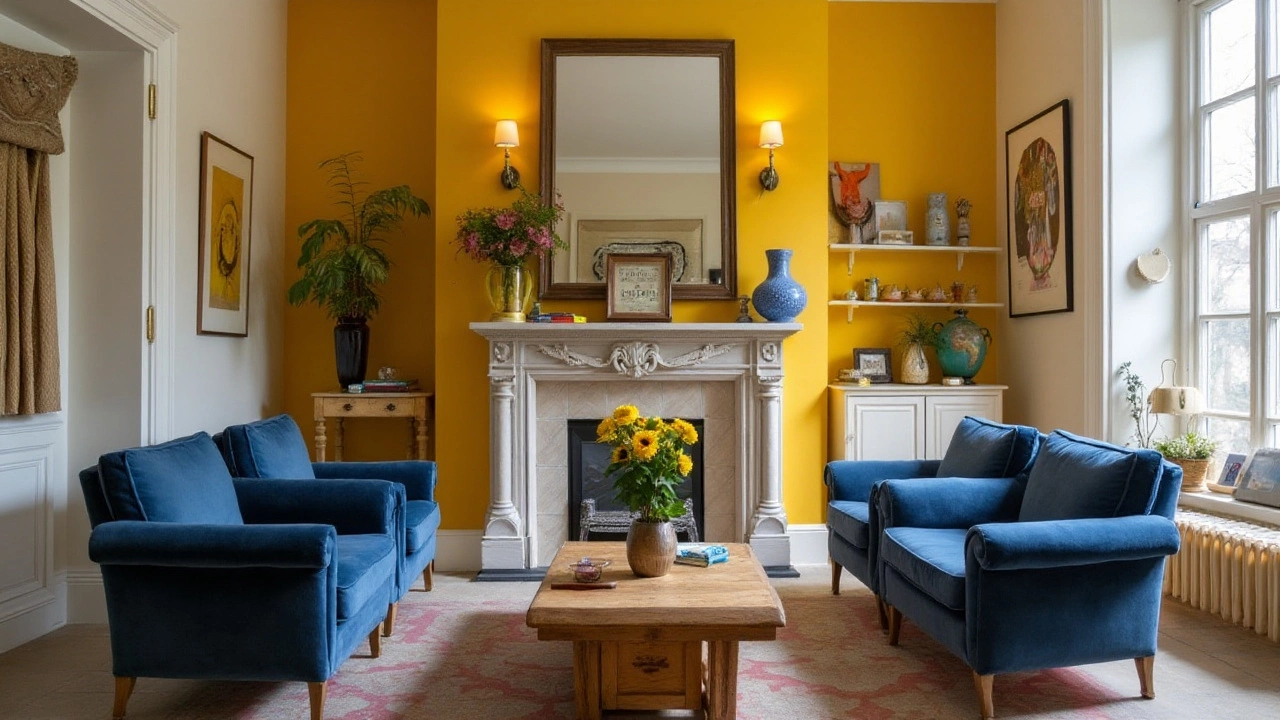
Tips for Choosing the Right Color
Transforming a living room with color can be an exciting yet daunting task. It’s not just about brushing some paint on the walls—it’s about making a room echo the essence of home. One approach is to start by considering the lighting in your living room. Natural light highlights colors differently than artificial lighting. For rooms that receive ample sunlight, lighter tones can be prudent to avoid glare, whereas darker, richer shades often make a cozy choice for dimly-lit rooms as they add depth and warmth.
Another key factor to consider is the mood you wish to set. Colors like blues and greens are known for their calming effects, making them ideal for unwinding spaces. In contrast, reds and oranges can inject energy and encourage liveliness, suitable for spaces intended for entertaining. It is intriguing that according to Leatrice Eiseman, executive director of the Pantone Color Institute, "The human heart is drawn to colors that are harmonious and lively, which is why using bold accents can invigorate a room."
It’s crucial to consider the existing elements of your decor when selecting a color. Look at the furniture, flooring, and artwork already present. Harmonizing the paint with the color of these elements can streamline your choices. For instance, if you have a significant piece like a charcoal sofa, choosing complementary tones for walls and trim can enhance its aesthetic appeal. A color wheel can be a useful tool here; it can help visualize which shades naturally sit well together.
Flexibility in color choices is another aspect to think of. Trendy colors come and go, but classic shades like beige, soft grays, and taupe have enduring appeal. Neutrals offer a limitless palette for adding bolder accent colors through cushions, throws, or artwork, allowing you to refresh the room without a full overhaul. The versatility provided by a neutral base is an attractive feature, especially in a living room that entertains various activities and moods throughout the day.
Don't overlook the significance of testing before committing. Painting a sample patch and observing it at different times of the day is invaluable. This patch test can reveal how the hue appears in different lights throughout the day and how it complements the room’s vibe. This small step often saves from costly mistakes or repainting dilemmas down the road.
Beyond these tips, personalization is vital. Injecting personal style reflects individuality and makes the space uniquely yours. Incorporating popular shades according to current trends is one way to do this but weaving in colors that have personal significance or emotional resonance is another powerful strategy. This approach creates not just a room but an experience tailored to those who inhabit and enjoy it.
Final Thoughts on Living Room Palettes
Choosing the right palette for your living room is a decision that extends beyond mere aesthetics. It blends the complexity of personal taste with the science of color psychology. The colors we choose can alter our perceptions and emotions, influencing everything from daily mood to social interactions. For instance, blue can evoke a sense of calm and relaxation, making it a perfect choice for a setting intended for conversation and unwinding. Meanwhile, lively hues like yellow and orange can infuse the space with energy and vibrancy, perfect for invigorating family gatherings or spirited evenings with friends.
While it's important to follow your personal preferences, keeping an eye on popular trends can provide much-needed inspiration. The enduring popularity of neutral tones—such as shades of grey, beige, and white—often stems from their versatility. Neutrals offer a blank canvas that can easily be adapted with seasonal decor changes or the introduction of vibrant accents. This adaptability means that your living room remains timeless and fresh, in varying contexts and times of the year.
The Balance of Trend and Timelessness
While it might be tempting to dive head-first into the latest color craze, balance is key. Trends come and go, but creating a space that resonates with you on a personal level is what truly makes your living room a 'living' space. A survey conducted by a well-known interior design magazine revealed that 70% of homeowners prefer to incorporate trendy colors through accessories and accents rather than committing to bold hues on walls, which can be costly and labor-intensive to change.Layering your main color with complementary tones is a technique often favored by designers. This involves selecting a primary shade—often a neutral—and accentuating it with bolder colors through textiles, artwork, or furniture pieces. Not only does this method bring depth and dimension to your room, but it also allows for easy updates as trends evolve over time.
"Good design doesn’t date. Bad design does," said Paul Rand, an acclaimed graphic designer. This notion is echoed in home decor where functionality and timeless style have their place, offering an enduring appeal in a world that thrives on change.
Ultimately, the goal is to create a space where you feel comfortable and at ease. This is your sanctuary, a reflection of who you are and how you want to live. Whether you favor a vibrant bohemian mix or a serene minimalist sanctuary, the decision should always circle back to your personal happiness and mental well-being. In this light, picking the right living room colors is more than a design choice—it's a pivotal part of crafting a home that feels uniquely yours.
Before you decide, spend time in the space at different points in the day to see how the light interacts with potential colors. Colors can drastically change under different lighting conditions, and a shade that seemed perfect under artificial light could look entirely different in natural daylight. This step can save disappointment and extra work, and it's essential in ensuring that your chosen color maintains its intended effect. Remember, your living room is one of the most significant spaces of your home; ensure it represents your style, fosters your comfort, and supports your lifestyle effectively.

